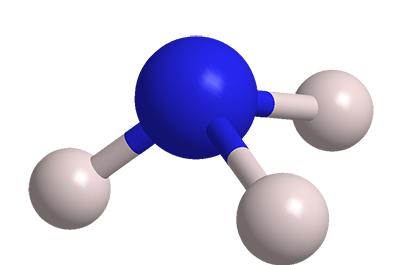What is Polycrystalline Silicon?
Polycrystalline silicon (polysilicon or poly-Si) is a high purity, polycrystalline form of silicon, used as a raw material by the solar photovoltaic and semiconductor industry. Polysilicon consists of numerous tiny silicon crystals joined together in a structure called a polycrystalline structure. It contains more than 99% of pure silicon and is processed using techniques that grow additional silicon crystals using a chemical vapor deposition (CVD) process followed by drawing the material in a crystalline form. This material plays a crucial role in the production of solar photovoltaic cells as well as semiconductor devices.
Production of Polycrystalline Silicon
Polysilicon is produced via a multi-step process that starts with the synthesis of trichlorosilane gas (SiHCl3) from metallurgical grade silicon. The trichlorosilane is purified and decomposed via a high-temperature pyrolysis process to produce chunks of polycrystalline silicon called polysilicon rods.
The key steps in the production process are:
– Metallurgical grade silicon is reacted with hydrochloric acid (HCl) at high temperatures producing trichlorosilane gas.
– Trichlorosilane gas is purified to remove impurities like metals and other silicon compounds using distillation.
– The purified trichlorosilane is heated to over 1000°C in a reactor chamber where it decomposes and deposits silicon on seed rods, growing polysilicon rods.
– The rods are cooled, cut into polycrystalline chunks and processed further for applications.
This process calls for special equipment that can handle high temperatures, vacuums and purity requirements. Major facilities producing polysilicon are located in China, Korea and the United States due to these production challenges.
Uses of Polycrystalline Silicon
Some key applications of polysilicon include:
Solar Photovoltaic Cells – Polysilicon is the fundamental raw material for manufacturing solar-grade photovoltaic cells. Almost 95% of solar panels today use polycrystalline silicon solar cells. The silicon crystals are grown into wafers that convert sunlight into electricity.
Integrated Circuits – Polycrystalline silicon is widely used in the semiconductor industry for manufacturing integrated circuits, logic and memory devices. It serves as the base material for microchips and circuits produced by companies like Intel and Samsung. Ultra-pure polysilicon is deposition onto wafers to create the transistors and circuitry.
Computer Chips – Modern CPUs, GPUs and other computer chips rely on polycrystalline silicon as the building block. Dense, complex circuitry packing billions of transistors is built on silicon wafers to enable powerful computing.
Displays – Thin-film transistor liquid crystal displays (TFT-LCDs) which are commonly used in screens of smartphones, laptops, televisions also use polysilicon. It enables the switching transistors in the LCD backlighting.
Outlook for Polycrystalline Silicon
With increasing global reliance on solar energy and continued advances in semiconductor technology, the demand for high-purity polysilicon is projected to grow steadily in the coming decades. Some projections estimate that annual polysilicon demand will increase from 200,000 metric tons currently to over 500,000 metric tons by 2030.
Major factors influencing the future polysilicon market include:
– Growing Production of Solar Panels – Industry targets of transitioning to renewable energy and initiatives like India’s solar goal of 500 GW by 2030 will drive up polysilicon consumption.
– Advanced Semiconductors – Newer process technologies requiring faster, more powerful chips will keep necessitating higher polysilicon usage per wafer.
– Electric Vehicles – Polysilicon has an emerging role in power electronics for EVs. Battery management systems, on-board chargers use silicon chips.
– IoT Expansion – Billions of new internet connected devices needed for applications like smart homes and cities will incorporate silicon chips.
– Supply Chain Resilience – Ongoing efforts to diversify polysilicon sources beyond China and reduce dependencies on individual regions.
With supportive policy environments and rising clean energy adoption worldwide, polysilicon is projected to have a bright future to come as the primary material enabling these industries. Cost reduction through innovation will also be important to drive mass proliferation of solar globally.
In summary, polycrystalline silicon has emerged as a critical material underpinning the rapid technology advancement seen in industries like solar energy, semiconductors, and electronics. Its unique crystalline structure and high purity allow for modern integrated circuits, solar cells and other applications. Continued progress in polysilicon production techniques and rising demand from renewables and electronics will likely ensure this important material remains a mainstay in the global economy in the decades to come. With innovative efforts, polysilicon can play a stellar role in building a sustainable future powered by clean energy and advanced technology.
*Note:
1. Source: Coherent Market Insights, Public sources, Desk research
2. We have leveraged AI tools to mine information and compile it



